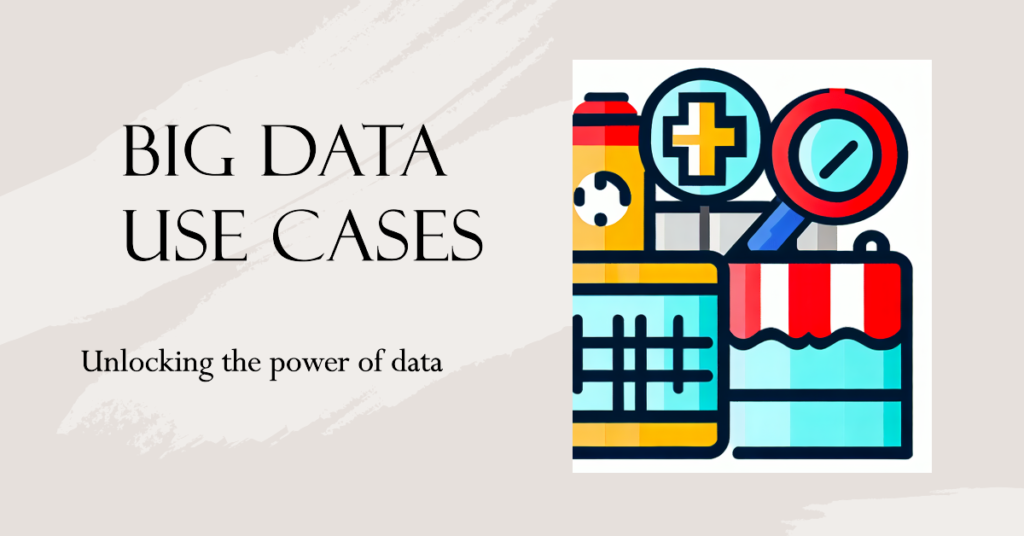The rise of big data.
Data is the new oil in the digital age.
Businesses, governments, and individuals are collecting more and more data.
‘Big data‘ is revolutionizing industries, boosting innovation, and boosting the economy.
The problem is managing, processing, and analyzing so much data.
Here’s a comprehensive guide to big data challenges and how to overcome them.
Understanding the 5Vs of Big Data
First, let’s look at the 5Vs of big data: Volume, Velocity, Variety, Veracity, and Value.

A. Volume
It’s crazy how much data gets generated today. There’s a lot of data coming into organizations, from social media to IoT. Because of that, there are some challenges.
- Storage management: Organizations need scalable, cost-effective storage solutions to accommodate data growth.
- Processing and analysis: Traditional data processing tools and techniques may need to be improved for handling vast amounts of data.
B. Velocity
Data is growing in volume and the speed at which it’s generated, collected, and processed. The rapid pace of data creation presents challenges in terms of the following:
- Real-time processing: Organizations need to process and analyze data in real-time to stay competitive and make data-driven decisions.
- Data streaming and ingestion: Efficiently handling data streams from various sources requires robust data ingestion and streaming technologies.
C. Variety
Big data comes in various formats and structures, including structured, semi-structured, and unstructured data. This variety poses challenges related to:
- Data integration: Integrating data from diverse sources and formats can be complex and time-consuming.
- Data analysis: Analyzing diverse data types may require advanced analytics tools and techniques.
D. Veracity
Big data accuracy and reliability is critical for making informed decisions. Veracity challenges include:
- Data quality: Ensure data is accurate, consistent, and free from errors and inconsistencies is essential.
- Data governance: Organizations must establish data governance policies and procedures to maintain data integrity.
E. Value
Extracting valuable insights from big data is the ultimate goal, but doing so can be challenging due to:
- Advanced analytics and machine learning: Uncovering valuable insights from big data often requires sophisticated analytics tools and techniques, such as machine learning and AI.
- Data visualization: Effectively presenting data analysis results in a visually appealing and easily understandable format is crucial for decision-making.
Real-Life Examples: How Companies Overcome Big Data Challenges

To illustrate how organizations tackle these challenges, let’s look at some real-life examples.
A. Walmart
Retail giant leverages big data to optimize supply chain and improve customer experiences. Walmart uses advanced data analytics tools to process and analyze large volumes of transactional data, social media data, and customer feedback. This enables the company to predict product demand accurately, manage inventory efficiently and offer personalized recommendations to its customers.
B. Spotify
Spotify uses big data to give users a more personalized experience. Spotify makes customized playlists based on each user’s listening habits and millions of playlists. In addition to enhancing the user experience, this approach helps increase engagement and retention.
C. UPS
The global logistics company uses big data to optimize delivery routes and reduce fuel consumption.
D. American Express
The financial services company leverages big data to identify and prevent fraudulent transactions. By analyzing patterns in transaction data, American Express can detect anomalies and potential fraud, thereby protecting its customers and minimizing financial losses.
E. Netflix
The streaming giant uses big data to make personalized content recommendations to its users. By analyzing user behavior, preferences, and viewing habits, Netflix can offer tailored content suggestions, leading to higher customer satisfaction and retention.
Tips for Overcoming Big Data Challenges

To successfully navigate big data challenges, organizations should consider the following strategies:
A. Invest in scalable storage solutions
Organizations need scalable, cost-effective storage, like cloud-based storage or distributed file systems like Hadoop, as data volumes grow.
B. Adopt real-time data processing tools
To handle big data velocity, organizations should adopt real-time data processing tools and technologies, such as Apache Kafka, Apache Flink, or Apache Spark.
C. Implement data integration and transformation tools
To deal with big data, organizations should use data integration and transformation tools, such as Apache NiFi or Talend. These tools will streamline the process of ingesting and integrating data from multiple sources and formats.
D. Establish data governance policies
To ensure data veracity, organizations should establish robust data governance policies and procedures to maintain data quality and consistency.
E. Develop advanced analytics capabilities
To unlock the value of big data, organizations should invest in advanced analytics tools and techniques, including machine learning and artificial intelligence.
F. Utilize effective data visualization tools
Data visualization tools, like Tableau, Power BI, and D3.js, make data analysis results visually appealing and easy to understand.
How big data will change the world: challenges and opportunities

There’ll be new challenges and opportunities as big data evolves. Here are some trends to watch:
A. Edge computing
With the proliferation of IoT devices, edge computing – processing data near the source – will become increasingly critical, alleviating the burden on centralized data storage and processing systems.
B. Data privacy and security
As data volumes and data breaches grow, organizations will need to prioritize data privacy and security to protect sensitive information and maintain customer trust.
C. Integration of AI and machine learning
The use of AI and machine learning in big data will increase as organizations invest more in these technologies. It’ll make data processing and analysis more sophisticated and automated.
D. The rise of data driven decision making
Organizations will need more data scientists, engineers, and analysts as they become more data-driven, presenting both challenges and opportunities for individuals and businesses.
Best Practices for Big Data Management

Managing big data effectively is critical to maximizing its potential benefits. Here are some best practices for big data management:
A. Define clear objectives
Big data projects need clear goals and objectives. Make a list of business problems you want to solve or insights you want to get.
B. Prioritize data quality
Don’t forget to collect and analyze accurate, reliable, and relevant data. Maintain high data quality by validating, cleansing, and enriching.
C. Establish a data governance framework
Make a data governance framework that outlines your organization’s policies, procedures, roles, and responsibilities. It’ll ensure data quality, consistency, and security.
D. Leverage metadata
Metadata, or data about data, can be invaluable for managing and understanding big data assets. Use metadata to provide context, track data lineage, and facilitate data discovery and integration.
E. Adopt a flexible and scalable architecture
Choose a robust data architecture that scales to accommodate growing data volumes and supports a variety of data types and processing requirements. This may involve distributed storage and processing systems like Hadoop, or cloud-based solutions.
Ethical Considerations in Big Data

We’re dealing with tons of data, which raises ethical questions. These are some ethical things to consider if you’re working with big data:
A. Data privacy
Don’t violate people’s privacy when collecting their data. Ensure you’re following data protection laws, like GDPR and CCPA.
B. Data fairness
Be mindful of potential biases in your data and algorithms. Strive to ensure that your big data projects are inclusive, fair, and do not perpetuate existing inequalities or discrimination.
C. Data transparency
Be transparent about your data collection, processing, and analysis methods. Communicate your intentions and practices to your stakeholders and customers to build trust.
D. Data accountability
Take responsibility for your big data projects. Implement safeguards and monitoring mechanisms to detect and mitigate unintended negative impacts.
Big Data Use Cases

Big data has been successfully applied in various industries and sectors to address different challenges and unlock new opportunities. Here are some notable use cases:
A. Healthcare
We use big data for early disease detection, personalized medicine, and population health management. Healthcare providers can make better decisions by analyzing electronic health records, genomic data, and wearable data.
B. Retail
Retailers can use big data to optimize pricing, inventory management, and supply chain operations. The customer experience can also be improved by analyzing customer behavior.
C. Manufacturing
In manufacturing, big data has been used to improve operational efficiency, predict equipment failures, and optimize production processes. By analyzing sensor data from machines and equipment, manufacturers can implement predictive maintenance strategies and reduce downtime.
D. Finance
The right big data can help financial institutions detect fraud, assess credit risk, and pick better investments. It’s possible for financial institutions to make better decisions using social media data, market data, and customer transaction data.
E. Smart Cities
Cities can use big data to optimize transportation systems, monitor air quality, and increase public safety by analyzing data from IoT devices, sensors, and other sources.
Managing big data means dealing with volumes, variety, and velocity of data and ensuring privacy and security. Utilizing best practices, leveraging the right technologies, and addressing ethical concerns will enable organizations to drive innovation, improve decision-making, and gain a competitive advantage.
We need to understand the challenges associated with big data and develop strategies to overcome them as we move into a data-driven world. Using big data, we can transform industries, create new opportunities, and improve people’s lives.
Keep these things in mind:
- Be prepared for the 3 Vs : volume, variety, and velocity
- Ensure data veracity and quality
- Address data storage and processing challenges
- Implement effective data security measures
- Manage data privacy concerns and comply with regulations
- Follow best practices for big data management
- Consider the ethical implications of big data usage
- Explore and learn from real-life big data use cases across industries
Get ready to unlock new growth, innovation, and success opportunities through big data. You’ll be able to successfully navigate big data challenges if you follow these guidelines and strategies. It can also drive positive change in your organization and beyond.

